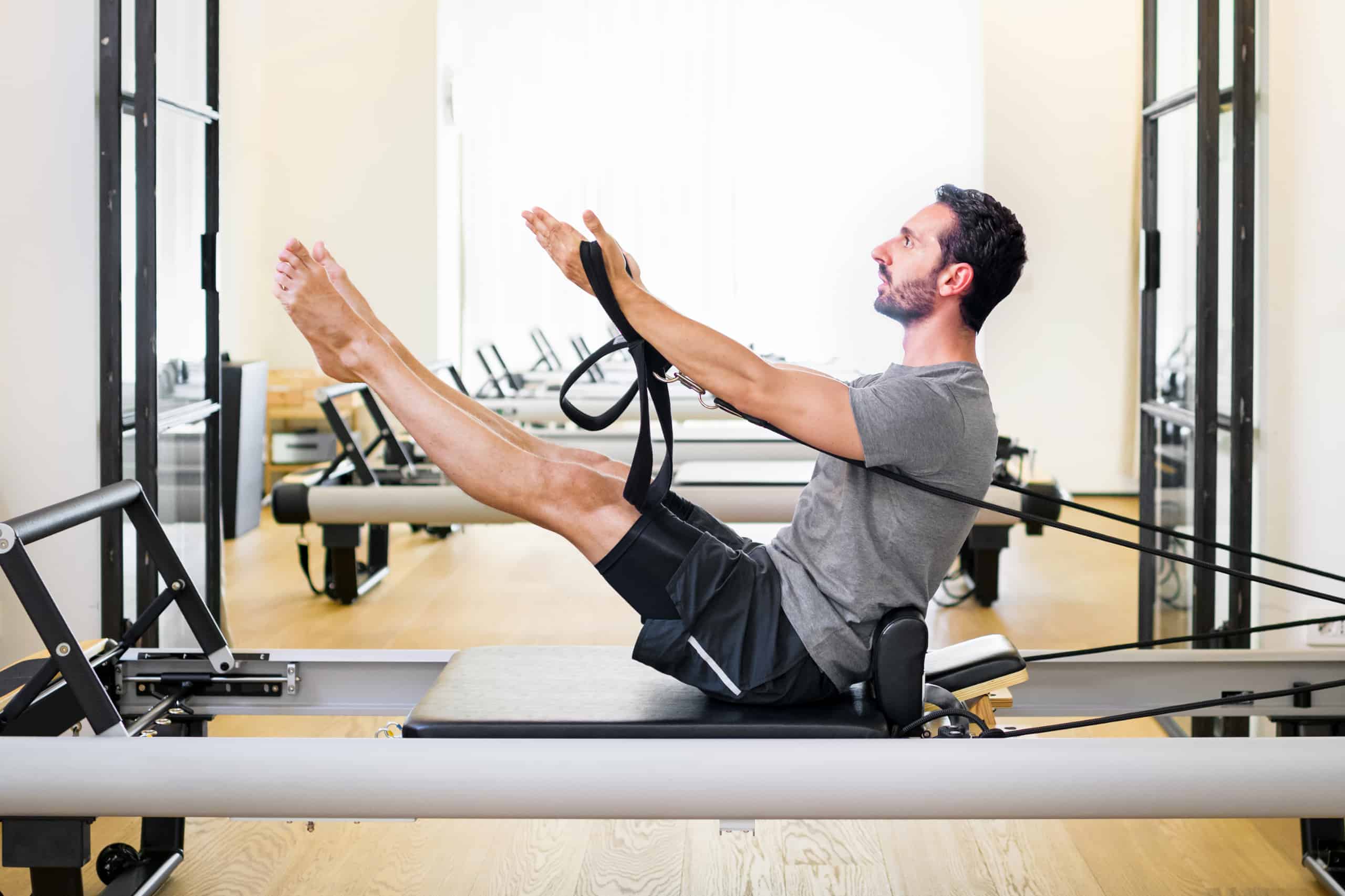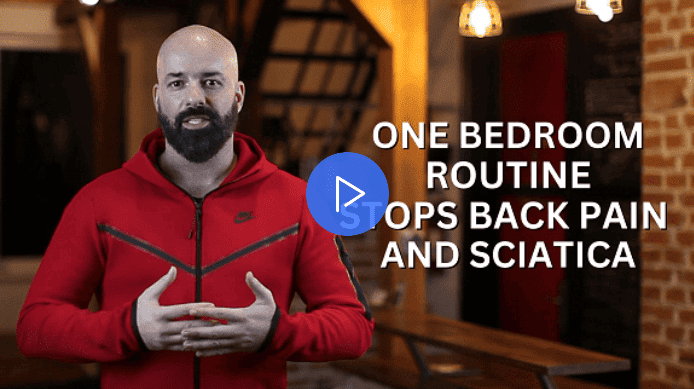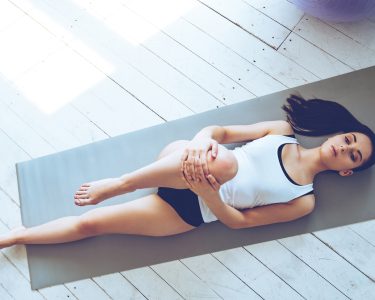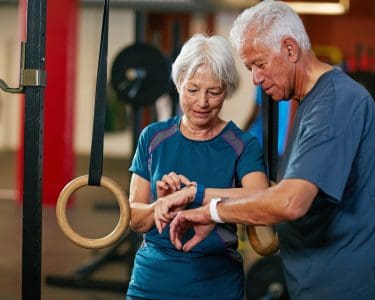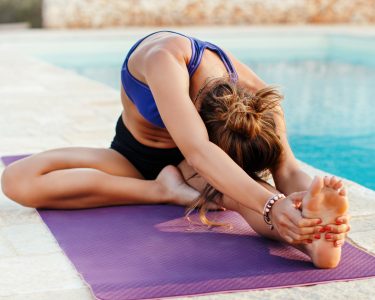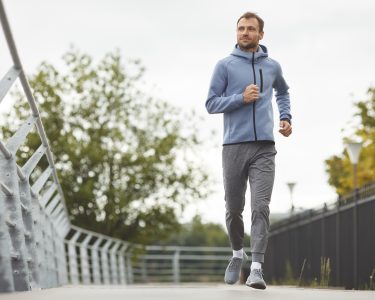Introduction
Pilates is exercise which strengthens muscle control and core. It’s beneficial for people with lower back pain; it stretches and strengthens their back muscles, minimising pain and boosting flexibility. This guide has the essential info for those with lower back pain to understand Pilates and do it safely.
We’ll talk about the history of Pilates, its principles, and the types of exercises which help lower back pain.
Overview of Pilates
Pilates is an exercise system that enhances core strength, flexibility and posture. It was created by Joseph Pilates in the early twentieth century. Today, millions of people around the world practice it.
Pilates focuses on precision and concentration. Its main aim is to balance strength and flexibility in the body, which promotes overall health. It’s especially good for people with back pain, as it provides a gentle yet effective way to ease symptoms.
The Pilates method consists of matwork exercises (on the floor) and apparatus workouts (using specialised machines). Matwork focuses on breathing and engaging stabilising muscles. Apparatus sessions isolate target muscles and support users who don’t have much strength or confidence. For example, exercises on the Cadillac or reformer offer up to 50% more resistance than mat-based workouts. In the end, this combination results in an intense yet low-impact routine that can help those with lower back pain avoid further injury or worsen existing conditions.
Benefits of Pilates for Lower Back Pain
Pilates is a form of exercise which focuses on the core muscles. It’s known to improve posture and strength in the lower back, making it great for those with back pain. It targets core muscles without straining sensitive areas. Pilates helps regain muscle flexibility and balance, and teaches good form and optimal posture. It can help reduce back pain.
Regular Pilates classes have benefits like improving body awareness. This form of exercise also reduces stress, tension, and anxiety, all of which can trigger muscle strain and back ache.
Getting Started
Intimidating, eh? Beginning a Pilates routine may seem scary for beginners. But don’t let that deter you! Pilates can be beneficial for people with lower back pain. It can improve posture, reinforce core muscles, and help ease the pain.
This guide will help you begin your Pilates practice and show you the basics of the exercise:
Choosing the Right Pilates Class
When starting out in Pilates, make sure you get the right advice and instruction. A qualified practitioner should customize it to fit your needs and capabilities. Consider these points when choosing a class:
- Qualifications and experience: Check that your instructor holds a recognized qualification and has experience teaching people with lower back pain.
- Safety: Your instructor should be up to date on first aid with manual handling and CPR skills.
- Teaching style: They should explain all the exercises clearly, paying attention to core engagement and joint compression.
- Classes: Be aware of the type of class you’re signing up for. Beginner classes focus on body awareness, breathing and alignment. Look for classes designed for people with lower back pain – they may be better than traditional classes that require complex movements or higher intensity efforts.
To get the most out of Pilates, approach it the right way and choose a class that fits your needs. This will help you stay fit safely and protect your spine health in the long run.
Equipment Needed for Pilates
Doing Pilates at home with minimal equipment? No problem! However, having some props and equipment will help you get the most out of your routine. You’ll need comfy clothes, a mat, and water. Here are extra items to consider:
- Foam rollers: Great for releasing tension in core muscles and other body parts.
- Stability balls: Engage stabilizing muscles to increase the challenge of moves.
- Pilates ring or circle: Two interlocking circles provide light resistance. Strengthens arms/legs and stretches problem areas.
- Resistance bands: Make moves more demanding and add variation. Tones and isolates core muscles.
- Pilates reformer machine: Uses spring loaded resistance. High-tech versions have computerized screens for tracking progress. Check out local fitness centers that offer classes.
Pilates Exercises for Lower Back Pain
Lower back pain? Pilates is here to help! It’s low-impact and strengthens abdominal, spinal, and pelvic floor muscles. This guide is brimming with essential exercises which will reduce your discomfort. Get ready for improved strength, flexibility, and posture!
Abdominal Strengthening Exercises
Strengthening your abs is essential for keeping a pain-free lower back. Pilates exercises can help you strengthen the muscles that support your back. Here are some Pilates exercises to condition your core:
- The Hundred Exercise: Lie on your back. Place your hands by your side and lift your head and shoulders off the floor. Your abs should be tucked in. Pump your arms up and down, counting to 100.
- The Scissor Blades: Lift one arm and one leg off the floor. This works both sides of your core and helps maintain your spine’s alignment.
- Pelvic Tilts: Lie on your back with bent knees. Push away from your feet while engaging your abs. Hold for 2-3 seconds.
- Single Leg Stretch: Lie on your back. Pull one knee into your chest. Reach out for the opposite foot to engage your core.
- Double Leg Stretch: Do a similar motion to the single leg stretch. Start with both legs pulled towards your chest. Alternate legs and reach your arms out. Don’t clench your shoulders.
- Swimming: Lie face down. Lift your right arm and both legs off the ground. Then switch to the other side. Don’t crunch your neck or shoulders.
Core Strengthening Exercises
Core exercises can aid in better spine alignment and help build muscles in the abdomen, back, and pelvis that provide lower spine support. Doing these exercises regularly and correctly can reduce lower back pain.
Pilates is great for active people, as it strengthens muscles without stressing joints. Popular pilates moves to reduce lower back pain are:
- Bridge: Lie on your back, with your legs bent and feet flat on the floor. Tilt your hips so only toes, knees, shoulders and head touch the ground. Hold for 5-10 seconds and then slowly release.
- The Hundred Exercise: Lie flat on your back and lift head and legs off ground. Pump arms up and down quickly. Count breaths out loud, such as ‘one-two-three.’ Do this for 5 reps. As you get better, do 10 or more reps.
- Cat Tail Movement: Curl spine downwards, using abs. Press elbows against stool or floor for balance. Bend knees towards chest until tailbone almost touches toes. Take a few deep breaths then release slowly. Repeat if needed.
Stretching Exercises
Stretching exercises are important for Pilates-based lower back pain relief. These exercises help improve posture, reduce muscle tension and pain, and increase range of motion. Do them regularly for the best results.
- Side Leg Lifts with Resistance Band: Lie on your right side, with a resistance band around your ankles. Put your right hand on the floor. Move your left leg up and down slowly, feeling the stretch in your hips, glutes, and lower back areas. Do 10 repetitions, slowly, and breathe deeply.
- The Seated Spinal Twist: Sit on the floor, with legs crossed at the ankles. Place both hands behind you for support, and rotate your waist slightly to the left side for 15 seconds. Then return to neutral before repeating on the opposite side for 15 seconds. This exercise helps promote spine flexibility and can be calming if done slowly, with breath control.
- The Downward Dog: Get into a “table position” by placing hands under shoulders, arms straight above shoulders, and knees below hips. Extend downward, pushing heels toward the ground without locking out joints. Feel the stretch across the entire length of your spine. Engage your abdominals and push your gluteal region off the ground. Breathe deeply through your nose. Touch your forehead to the mat after exhaling through your mouth. Do this 3-4 times or until you feel relaxed, with minimal discomfort.
Safety Considerations
Pilates can reduce back pain, and boost posture. But, practice it with caution! When using Pilates for lower back pain, safety should be top priority. This guide will give you essential safety tips for maximizing its benefits. Remember to keep them in mind when using Pilates for back pain relief.
Here are some essential safety tips to keep in mind when using Pilates for back pain relief:
- Always warm up before starting a Pilates session.
- Start with basic exercises and gradually move up to more complex ones.
- Listen to your body and stop immediately if you feel any pain.
- Pay attention to your form and technique.
- Make sure to rest between sets and take breaks if needed.
- Consult a doctor or physical therapist before starting a Pilates program.
Proper Form and Technique
Proper form and technique are essential when doing Pilates exercises to make sure it’s both secure and productive for somebody with lower back pain. Bad form increases the risk of further injury or aggravating an existing injury. Every movement engages your core muscles and other muscles in distinct ways; so, it’s vital to be aware of body mechanics while performing each exercise.
When practicing Pilates, begin with small movements or modified versions of exercises, concentrating on correct breathing and body alignment. As your stability, balance, strength, and flexibility enhance, you can increase the range of motion of each movement safely. Make sure to keep the following safety instructions in mind:
- Maintain a neutral spine position throughout all movements; keep your spine in its natural alignment without arching or curving it.
- Practice movements with full ranges of motion step by step.
- Listen to your body and make necessary changes during each exercise.
- Don’t exceed comfortable limits; practice mindful movement.
- Keep your chin tucked, while keeping a neutral neck position.
- Engage abdominal muscles throughout all exercises.
- Avoid exercising if in acute pain; always get medical advice.
Working with Injuries
Prevention is the key when it comes to working safely with an existing injury. If you have back, neck, or shoulder pain, exercise with caution and keep a comfortable range of motion and joint stability. Regular workouts can benefit those with lower back pain, but some exercises may be too risky for those with existing injuries.
Before beginning Pilates or any other form of exercise, it is important to talk to your primary care provider. This will help ensure the activity is appropriate for your condition and comfort level. You should also talk to your doctor if you have sciatica, discogenic pain, joint instability, or postural misalignment.
Once your doctor has approved exercise activity, they might suggest beginning a safe low profile Pilates program. This can help those with:
- Mild muscular strain/tear/sprain;
- Thoracic outlet syndrome (TOS);
- Fibromyalgia;
- Scoliosis;
- Arthritis;
- Shoulder impingement syndrome;
- Cervicalgia (neck pain);
- Lumbar instability syndromes;
- Carpal tunnel syndrome (CTS);
- Hip issues such as impingement or labral tear/injury;
- General aches and pains of sedentary living; and
- Overworked joints from athletic activities.
Safety needs to be paramount when consulting any exercise program. Speak to both your doctor and certified trainer before starting any program, especially if you have special considerations like an existing lower back injury.
Conclusion
We’ve been taught lots in this guide. We know how Pilates can help with lower back pain. We looked at the poses, breathing and safety tips. Now let’s sum it up and learn why Pilates is useful for people with lower back pain.
Conclusion? Pilates helps!
Review of Benefits of Pilates
Pilates is a super helpful exercise. It offers many advantages for those with lower back pain. Combining stretching, strengthening, and breathing exercises helps to manage existing pain and prevent future issues. Pilates focuses on proper alignment, coordination, and posture. This helps to reduce tension in the spine. It also increases awareness, range of motion, and abdominal support muscles.
Pilates aids in building strong core muscles. This gives balance and support during activities like sitting or lifting. It also increases flexibility in the hips and hamstrings. This allows the spine to move during tasks like working out or carrying groceries. Finally, it teaches mindful body awareness. This can be used as a preventative measure to avoid any extra stress to the lower back.
If you have lower back pain or want to improve your spine health, Pilates is worth a try. It’s an excellent exercise tailored towards protecting the lumbar spine. You’ll also gain strength and flexibility.
Resources for Further Learning
There are lots of ways to start and improve your Pilates practice. You can get real-time help from a certified instructor or learn at home with technology. You can join Pilates classes at a fitness center, or get private lessons at a community college or Pilates studio. Yoga or Tai Chi classes could also be helpful.
Online forums are available for Pilates enthusiasts to share knowledge, support each other, and answer questions. Websites like yogaclassesnearyou.com, pilatespro.com, and pilatesology.com offer streaming videos for lower back pain relief or for specialized therapeutic use.
Books on lower back pain also provide enjoyable exercises to strengthen without feeling overwhelmed. You can also use foam rollers and a mat to manage your recovery journey. This may lead to less stress on joints, better posture, and increased flexibility – all of which can help with muscle movement.
Frequently Asked Questions
Q1: What is Pilates?
A1: Pilates is a form of exercise that focuses on strengthening the core muscles of the body, including the back, abs, and hips. It is a low-impact form of exercise that can help improve posture, flexibility, and balance.
Q2: Can Pilates help with lower back pain?
A2: Yes, Pilates can be an effective way to alleviate lower back pain. Pilates exercises focus on strengthening the muscles that support the spine, improving posture, and increasing overall flexibility and range of motion.
Q3: Is Pilates safe for people with lower back pain?
A3: Pilates can be safe for people with lower back pain, but it is important to work with a qualified instructor who can tailor the exercises to your specific needs and limitations. It is also important to speak with your doctor before starting any new exercise program.
Q4: How often should I do Pilates to help with lower back pain?
A4: The frequency of your Pilates practice will depend on your individual needs and goals. Some people find that practicing Pilates a few times per week is enough to see results, while others may opt to practice daily. It is important to listen to your body and not push yourself too hard.
Q5: What are some specific Pilates exercises that can help with lower back pain?
A5: Some Pilates exercises that can help alleviate lower back pain include the pelvic tilt, the spine stretch, the single leg stretch, and the swan. It is important to work with a qualified instructor who can show you how to perform these exercises properly.
Q6: How can I find a qualified Pilates instructor?
A6: You can find a qualified Pilates instructor by asking for referrals from friends or family members, searching online, or asking at your local gym or fitness studio. Look for an instructor who has completed a reputable Pilates certification program and has experience working with clients with lower back pain.

